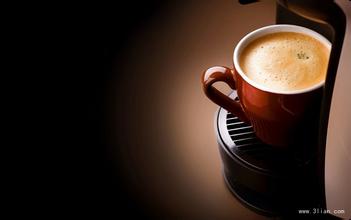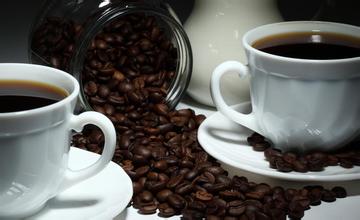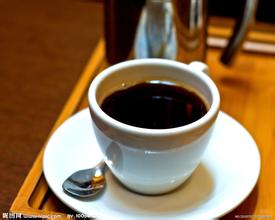Introduction to the Flavor and Taste of Coffee Manor in Ecuador
Ecuador has a presidential system. On 26 November 2006, Correa, a candidate of the Sovereign Motherland Movement, was elected president in the second round of presidential elections and took office on 15 January 2007. Immediately after taking office, Coe promoted the convening of the Constituent Assembly. On April 15, 2007, Eritrea decided to hold a Constituent Assembly in a referendum with an approval rate of 81.72%. In September, Eritrea held an election of representatives to the Constituent Assembly, and the ruling party, the Sovereign Motherland Union, won 61% of the seats. In July 2008, the Constituent Assembly adopted the new draft constitution. In September, the new constitution was passed in a referendum with 63.94% of the vote. In October, the new constitution was formally promulgated and implemented. In April 2009, Eritrea re-held presidential, parliamentary and local government elections in accordance with the new constitution, and Correa was re-elected president. On September 30, 2010, large-scale police protests broke out and riots broke out in major cities such as Quito, Ecuador, in protest against the adoption by the National Congress of the Public Service Act, which included provisions for cuts in police and military benefits. President Correa was attacked and was trapped for a time, then rescued with the support of the military, parliament and the international community. On May 7, 2011, Eritrea held a referendum on 10 political and social issues, including judicial reform and media control, all of which were adopted. Since 2012, the political situation in Eritrea has remained stable. [3]
Constitution
The current Constitution was adopted on 28 September 2008 and formally entered into force. The new constitution establishes a political system of separation of powers. On the basis of strengthening executive power, reforming legislative power and judicial power, the rights of citizens' participation and social supervision and the right to vote are added. It is stipulated that the President may be re-elected once and the Parliament may be dissolved in the first three years of his term. We will strengthen the government's macro-planning and planned guidance on the national economy, strictly control strategic departments related to the national economy and people's livelihood, strengthen financial supervision, and abolish the autonomy of the central bank. Set up a debt committee to strictly examine and approve the borrowing of foreign debts. [3]
Parliament
The National Congress of Ecuador adopts a unicameral system. There are a total of 124 members, including 15 members from the whole country, 103 from provinces and 6 from overseas. The current Congress was formed in April 2009 and was formally sworn in on July 31 for a four-year term. The seats occupied by various parties in the parliament are as follows: 59 seats for the ruling Sovereign Motherland Movement, 19 seats for the "1 / 21" Patriotic League Party, 7 seats for the Institutional Reform Party, 7 seats for the Urban Movement, 5 seats for the people's Democratic Movement, 5 seats for the Urbanism Movement for National Integrity, 4 seats for the Christian Socialist Party, 4 seats for the Pachakutik Movement, 3 seats for the Rhodos Party, 2 seats for the Democratic left Party, and 9 seats for other parties. The Speaker and Deputy Speaker shall be elected by the plenary session of Congress for a term of two years and shall be eligible for re-election. Current Speaker Fernando Cordero (Fernando CORDERO), first Deputy Speaker Juan Carlos (Juan Carlos CASSINELLI), second Deputy Speaker Rocio Baraleso (Ro í o VALAREZO)
When Thomas and the crew landed on the island, they were frantically looking for water and were so thirsty that they squeezed juice from the fat leaves of the cactus to drink. At last a source of water was found in a rocky gully. Thomas attributed it to the gift of God, because it was good Friday, and they had piously celebrated mass before they set out in search of water. But Thomas will never know that the island they landed on is the only island in the Galapagos archipelago that has plenty of fresh water, today's St. Cristobal Island (Saint Cristobal).
St. Cristobal is a larger island in the Galapagos archipelago. At 410m above sea level, there is a small lake called El.Junco, which forms streams along the rocks and volcanic rocks on the southern slope of the island. Mineral-rich fresh water moistens the land of St. Cristobal, keeping the soil moist and fertile. It provides the most rare conditions for the growth of coffee here.
In 1875, 340 years after Frey Thomas de Belanga discovered the island, an indigenous man named Corvus came to St. Cristobal, where he established the Hasunda Coffee Garden and planted about 100 hectares of Arabian bourbon coffee trees. Because the plantation is located between 140m ~ 275m above sea level and the climate is equivalent to that of inland 915m ~ 1830 m, the unique geographical conditions are very suitable for the growth of super hard coffee beans (SHB) with high acidity, so this high-quality coffee has settled down here.
As coffee is consumed by people all over the world, the world coffee industry is also moving towards mass production, while St. Cristobal, a small and unreliable coffee industry, is in trouble and is likely to be forced to give up without profit. It wasn't until the early 1990s that the Gonzalez family bought Hasunda Coffee Park. The localized microclimate caused by the Humboldt current (HumboldtCurrent), strong equatorial sunlight and sharp temperature changes (43 ℃ at sea level and 10 ℃ to 16 ℃ above sea level) provided advantageous conditions that prompted the Gonzalez family to expand their coffee plantation. By reclaiming the early land, the Gonzalez family doubled the size of the coffee plantation.

Important Notice :
前街咖啡 FrontStreet Coffee has moved to new addredd:
FrontStreet Coffee Address: 315,Donghua East Road,GuangZhou
Tel:020 38364473
- Prev

Introduction to the characteristics of Panamanian Cupid Coffee Flavor Manor with thick, sour and floral flavor
Panama is rich in forest resources and has many tree species, including valuable wood such as mahogany, cedar, teak, mahogany, and cedar. The forest area of eastern Dalian Province is the most widely distributed, but it has not been fully developed due to lack of market and for reasons such as national defense and protection of the natural ecological environment. [5] according to FAO estimates in 2010, the forest area of Panama is 4.29 million hectares, accounting for the land area.
- Next

An introduction to the manor producing area with low ripe fruit aroma and the flavor of fine Ugandan coffee beans.
Climate: although Wu is located on the equatorial line, due to its high terrain, vertical and horizontal rivers and dotted lakes, it has abundant rainfall, luxuriant plants and spring all the year round, and was once regarded by Churchill as the Pearl of Africa. The annual average temperature is 22.3℃. The temperature was the highest in October with an average of 23.55 ℃ and the lowest in June with an average of 21.4℃. The annual rainfall in most areas is between 1000 and 1500 mm.
Related
- Detailed explanation of Jadeite planting Land in Panamanian Jadeite Manor introduction to the grading system of Jadeite competitive bidding, Red bid, Green bid and Rose Summer
- Story of Coffee planting in Brenka region of Costa Rica Stonehenge Manor anaerobic heavy honey treatment of flavor mouth
- What's on the barrel of Blue Mountain Coffee beans?
- Can American coffee also pull flowers? How to use hot American style to pull out a good-looking pattern?
- Can you make a cold extract with coffee beans? What is the right proportion for cold-extracted coffee formula?
- Indonesian PWN Gold Mandrine Coffee Origin Features Flavor How to Chong? Mandolin coffee is American.
- A brief introduction to the flavor characteristics of Brazilian yellow bourbon coffee beans
- What is the effect of different water quality on the flavor of cold-extracted coffee? What kind of water is best for brewing coffee?
- Why do you think of Rose Summer whenever you mention Panamanian coffee?
- Introduction to the characteristics of authentic blue mountain coffee bean producing areas? What is the CIB Coffee Authority in Jamaica?

